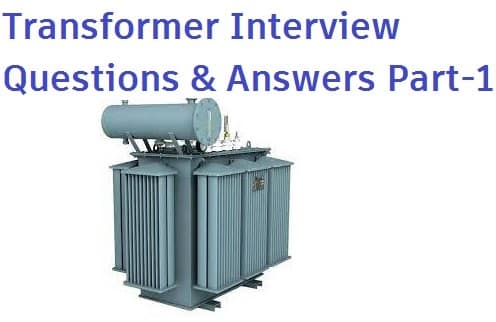
What is BDV Test of transformer oil?
The transformer oil is used in the transformer for insulation as well as for cooling purpose. The different insulating materials have different dielectric strength. The insulating material should sustain the voltage up to its dielectric strength. If the voltage is increased above the specified dielectric strength of the insulating material, the current starts flowing through it and eventually the material get permanently punctured. The transformer oil BDV Value is tested on BDV tester for examining the healthiness.
What is the meaning of Dyn11?
The first capital letter “D” shows that the primary winding configuration is in delta connection. The second small letter “y “shows that the secondary winding is star connected and the letter n shows that it has the neutral point. The letter “11” shows the phase difference between the primary and secondary voltage of the transformer.
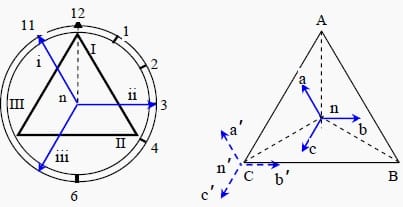
D- primary winding in ∆ connection
yn- secondary winding in star connection with neutral point
11- There is a phase angle difference of 30-degree between the primary and secondary line voltages. The secondary line voltage lags by 30 degrees to primary voltage.
How many earthing are required for a distribution & power transformer?
As per electricity law, the transformer must be earthed at three locations.
- Neutral Grounding: Neutral of the star winding must be connected to the separate earth pit. The solid or Neutral Grounding can be done.
- Body Earthing: The transformer must be earthed from the two distinct non-live parts of the transformer.
What is the main reason of using NGR in a power transformer?
The neutral grounding resistor is used to limit the fault current in the star connected winding. During unbalancing, the fault current flows through neutral to ground. If the neutral of the transformer has solid ground, a high current will flow through the winding of the transformer and it can damage the transformer.
To limit the fault current, the neutral of the transformer is connected to earth through the grounding resistor.
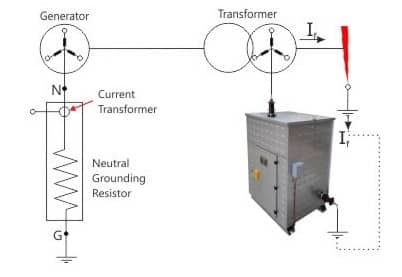
What should be the value of resistance in Transformer NGR?
NGR Resistance Value Calculation:
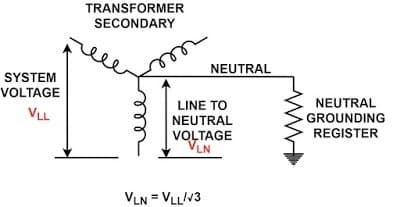
R = VL-N/ If
= (VL-L/√3) /If
Why is a step down transformer used for welding purposes?
For jointing two metallic joints through welding process, high temperature is required. The temperature is proportional to the square of the current through the circuit.
The higher the current, the higher the temperature.
When the secondary of the transformer has less number of turns in comparison to the number of turns in the primary, it is called a step down transformer.
The secondary voltage of step down transformer is less than the primary and the current of the secondary is more than the primary current. Principally, the power of the primary and secondary is equal.
This larger secondary current is very useful in welding process. That is why step down transformer is used for welding.
What is the difference between an on load tap changing transformer and off load tap changing transformer? Where do we use them?
ON load tap Changer (OLTC) is provided in the grid transformer to regulate the secondary voltage of the transformer where ;
- There is frequent variation in the grid supply
- Where it is not possible to switch off the transformer for changing the primary tap of the transformer.
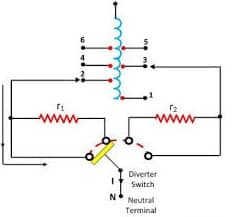
On Load Tap Changer
On load or Off-load tap changer is installed at the HV side of the transformer. By tap changing, the primary turns are increased or decreased. When the tap position is increased, the some of the primary turns get shorted and the flux in the core increases. The increased flux links to the secondary and secondary voltage increases.
Which type of transformer use in mobile charger?
The switched mode power supply is used for mobile charging. The 220- Volt AC supply is converted into DC supply and then it is chopped at higher frequency about 15–50 KHz.
The high frequency is fed to step down transformer and the secondary volage of the transformer is rectified to get the desired DC voltage for mobile charging.
The transformer size reduces because it works on very high frequency.
A transformer rated for 500kva, 11kv/0.4kv has an impedance of 10% and is connected to an infinite bus. What is the fault level of the transformer?
Fault KVA of transformer =( Rated KVA of transformer/ % impedance) x100
Fault KVA of transformer =( 500/10) x100 = 500/0.1 = 5000 KVA
Fault Current I = Fault KVA/ √3 V
Fault Current = 5000/(1.732 x 0.4) = 7 kA
What is the reason a transformer may burn?
The transformer may fail if,
- The transformer is loaded above its rated capacity
- If the primary is fed with DC voltage. Every electrical engineer is aware of this fact.
- The transformer is operated above its rated designed flux rating( The transformer must be operated within the rated supply voltage and frequency) The flux in the transformer is equal to the ratio of V/f.
- The sludge formation in the oil affects the cooling rate of the transformer and may be one of the reasons for rising of winding temperature.
- The DGA( Dissolved Gas Analysis ) must be done to ensure the healthiness of the transformer oil.
The transformer is the most reliable equipment, and it gives uninterrupted service for years if the general maintenance of the transformer is properly done.
A transformer has 50 turns in the primary and a hundred in the secondary. If the primary is connected to a 220 volt DC supply, what will be the voltage across the secondary?
The voltage induced in the secondary depends on the number of turns and on the rate of change of magnetic flux.
If the primary is fed with DC, the rate of change of current is zero. The voltage induced in the primary is
e=L di/dt
di/dt=0
So, e=0
The primary current in the transformer
Ip=(V-e)/Rp
Ip=V/Rp
If the primary is fed DC voltage, the enormous current will flow in the primary as primary is just like short circuit because the back emf(e) is absent.
The transformer will definitely fail if fed DC voltage to its winding.
Why voltage is stepped up?
The voltage is generated at the generating Station at 11 KV. The power generated at generating Station has to travel a long distance for utilization of power at the receiving end. The voltage is stepped up using step up transformer.
The large line loss will be there,If the voltage generated is transmitted without stepping up the voltage. This is because transmission of low voltage has to carry a large current and there will be more loss in the line(l2R).
If the voltage is steeped up from 11 to 22KV, the increase in the voltage is 2 times so decrease in the current will be 2 times. The decease in line loss is about 75%.
Line loss if voltage is doubled,
( I/2*I/2*R= 0.25 I2R
Thus line losses is 1/4 the when we double the transmission voltage.
Why voltage is stepped down?
At the receiving end the voltage is stepped down for utilization of power using step down transformer. The voltage at the receiving end is steeped down according to requirement of the voltage for the operation of the equipment.
The different voltage level required for the equipment are as follows.
- 6.6 and 11 KV for HT Motors
- 440 volts for 440 Volts LT motors
- 690 Volts for 690 volts LT motors
- 220 Volts for single phase equipment
Related Posts
Nice 👍
Yes,its good to teach a lesson like this to enable a aware on our day by day works through this lesson.I need you to send to us every new topics about electrical field.
Sir pls sand your book name than I purchase and all electrical SLD send me pls and all transform and motor star delta and all tpn MCB mccb acb vcb notes send me